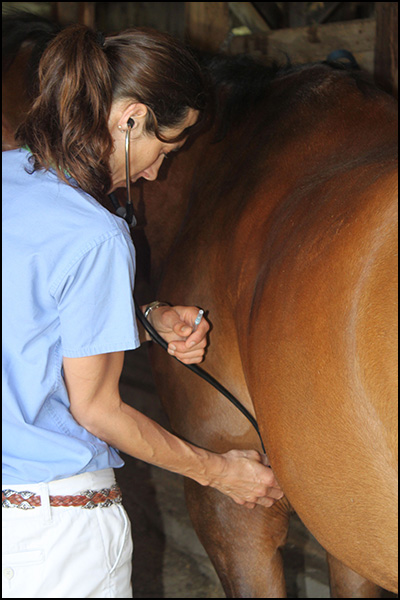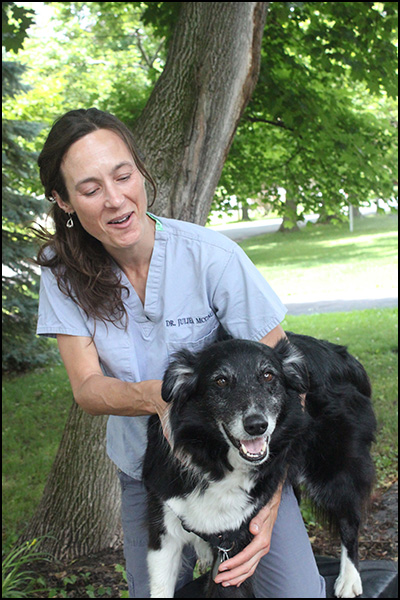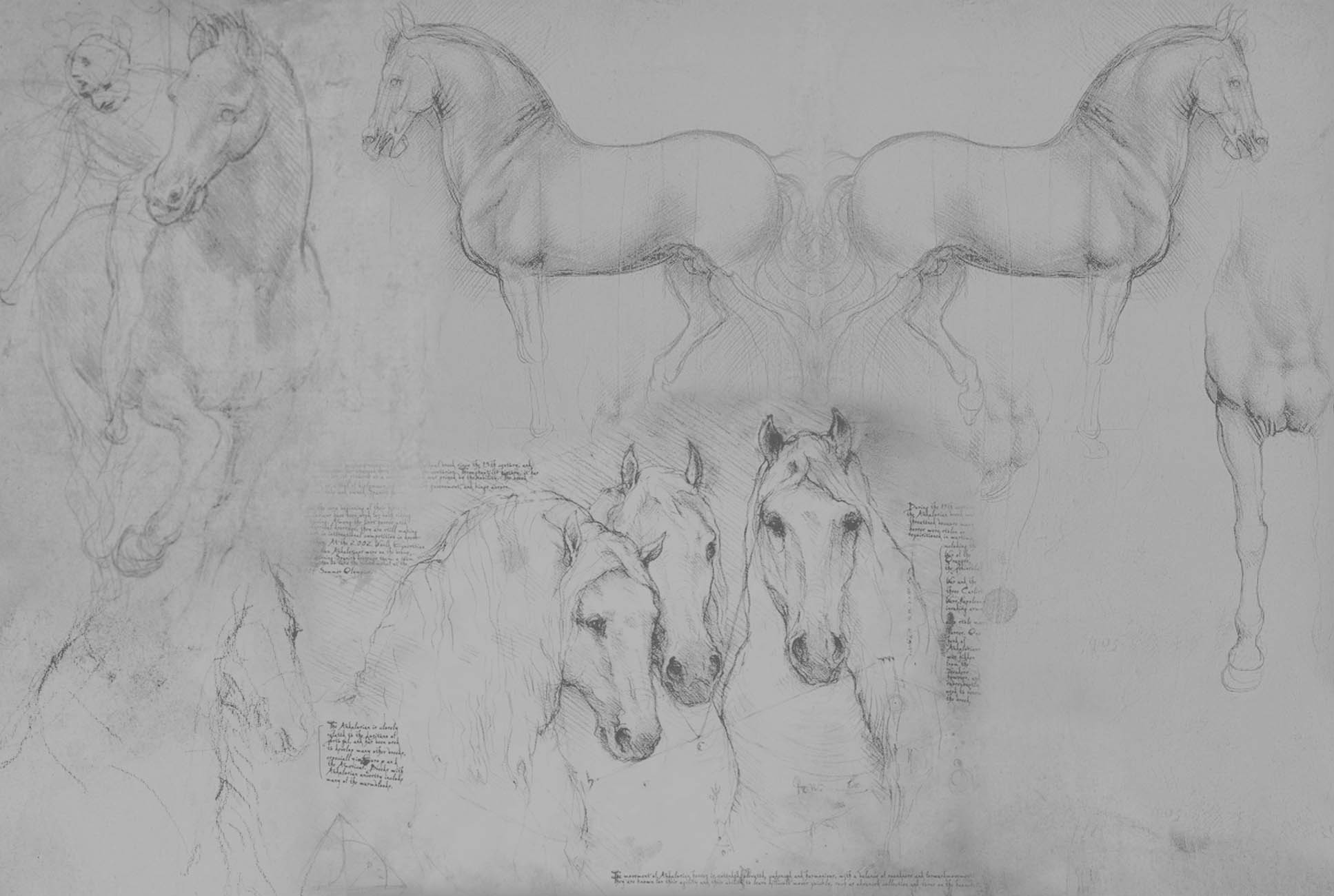Exams
Chirorpractic Exam | Lameness Exam | Neurologic Exam | Physical Exam | Soundness Exam
The Physical Exam
The Physical Exam is the foundation of veterinary medicine. Since our animal patients do not verbalize their concerns to us, this exam is the time during which a veterinarian assesses an animal’s level of discomfort and evaluates each of the body systems. We check the eyes, the mouth, the heart and the lungs. We listen for intestinal motility within the abdomen and monitor the digital pulses and hoof temperature. We check the perianal region beneath the tail, and observe the general conformation and limb condition. During this time we also record the patient’s body condition score, heart rate, respiratory rate, and temperature.
The Physical Exam provides us with important baseline information against which to compare future changes in a patient’s condition. This may be as simple as gauging the efficacy of a weight loss program, as detailed as observing the onset of a mild heart murmur, or as critical as monitoring a patient’s response to therapy during an episode of colic.
The Physical Exam also serves as a point of departure from which more detailed assessments are made. For example, a dog with muscle atrophy may require a detailed neurologic exam. A horse with a history of weight loss despite a plentiful diet indicates the need for a dental exam with a speculum, bloodwork, and a fecal analysis.
Dr. McCall includes a full Physical Exam as part of the initial assessment for every patient that presents for chiropractic care. This is because it is important to determine whether the patient is presenting with a condition for which Chiropractic is an appropriate treatment. There are many types of diseases that cause symptoms of musculoskeletal discomfort, yet are not reflections of a primary musculoskeletal problem. For example, a liver or kidney disorder can cause symptoms of a guarded and painful lower back. A dental malocclusion can cause a painful Temporo-Mandibular Joint. In these situations it is in the animal’s best interest to treat the underlying organ or dental problem prior to attempting chiropractic treatment. This is some of the reasoning behind the laws in many states –including New York- stipulating that only an appropriately trained Veterinarian can treat animals with Chiropractic or Acupuncture.
In its current guidelines for Equine Preventative Healthcare, The American Association of Equine Practitioners recommends that every horse receive a Physical Exam at least annually, and that more frequent exams may be ideal for some horses, depending upon their age and individual needs.




